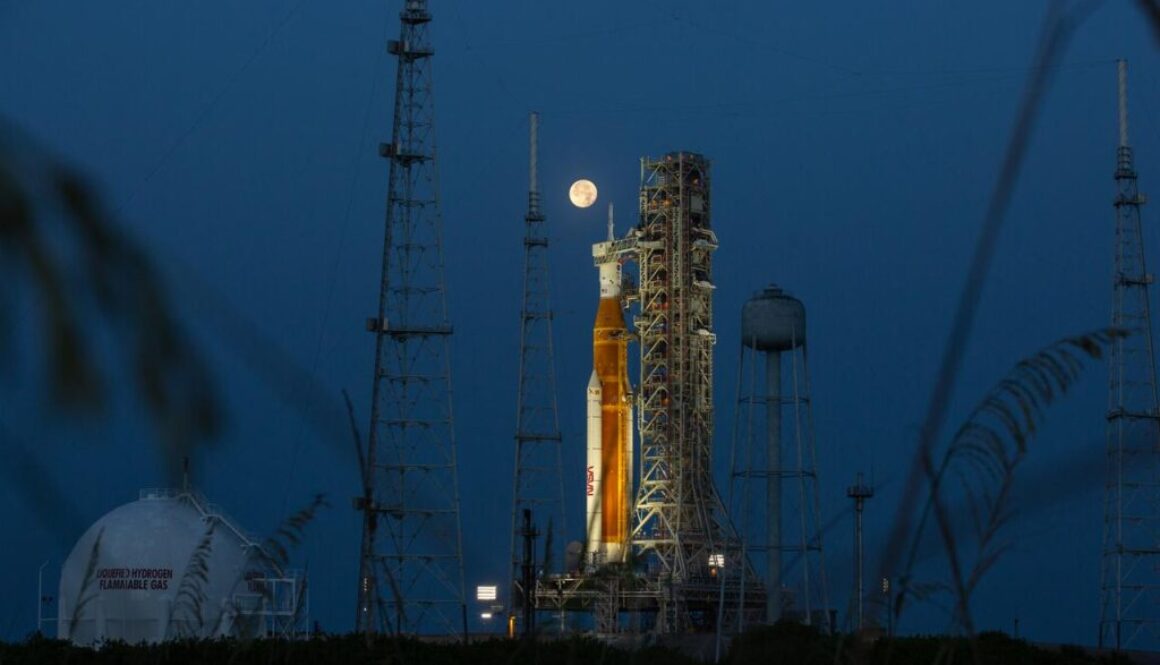Unveiling NASA’s Artemis: The Future of Space Exploration
The Artemis Program represents a bold new chapter in space exploration led by NASA. Let’s delve into the overview, goals, and significance of this groundbreaking initiative.
Overview of Artemis Program
Fig. 1: “Artemis: The Gateway to the Future” (Credit: Artemis-Mark-Full-Color, NASA)
NASA’s Artemis Program aims to return humans to Moon and pave the way for future missions to Mars. It builds upon the legacy of the Apollo, with a focus on sustainable lunar exploration.
Goals and Objectives of Artemis Program
The primary goal of Artemis is to establish a sustainable human presence on the Moon, with the ultimate objective of preparing for crewed missions to Mars. This involves conducting scientific research, testing new technologies, and expanding our understanding of the cosmos.
Importance of Artemis Program for Space Exploration
Artemis holds tremendous potential for advancing space exploration by pushing the boundaries of human knowledge and innovation. It serves as a stepping stone towards crewed missions to Mars and beyond, opening up new frontiers for exploration.
The Path to Artemis: History of Space Exploration
To truly appreciate the significance of the Artemis Program, we must first understand the rich history of space exploration and NASA’s role in shaping it.
Early Space Exploration Milestones
From the launch of Sputnik to the Apollo moon landings, humanity has achieved remarkable milestones in space exploration. These early achievements laid the foundation for future missions and inspired generations of scientists and engineers.
Evolution of NASA’s Space Missions
NASA’s space missions have evolved over the decades, from the pioneering Mercury and Gemini programs to the monumental Apollo missions. Each mission brought new challenges and discoveries, driving our understanding of the cosmos forward.
Challenges Faced in Space Exploration
Space exploration is not without its challenges, including technological limitations, health risks for astronauts, and the vast distances of outer space. Overcoming these obstacles requires creativity, perseverance, and collaboration.
Artemis Program Components and Technology
Fig. 2: “Journey Begins: Kennedy Space Center Launch” (Credit: KSC-20230623-PH-MBR01_0001, NASA)
At the heart of the Artemis Program are cutting-edge technologies and spacecraft that will enable human exploration of the Moon and beyond.
Space Launch System (SLS)
Fig. 3: “Pre-launch Activities at Kennedy Space Center” (Credit: KSC-20220614-PH-JBS01_0332, NASA)
The Space Launch System (SLS) is NASA’s next-generation rocket that will carry crewed missions to the Moon and beyond. It is designed to be the most powerful rocket ever built, capable of sending astronauts deeper into space than ever before.
Orion Spacecraft
Fig. 4: “Exploring the Gateway with Orion: Artemis VI” (Credit: Gateway – Orion – Artemis VI, NASA)
The Orion spacecraft will serve as the crew module for Artemis missions, providing a safe and reliable means of transport for astronauts. It is equipped with advanced life support systems, navigation tools, and communication capabilities.
Lunar Gateway and Human Landing System
Fig. 5: “NASA Headquarters: Advancing Space Exploration” (Credit: NHQ202305190002, NASA)
The Lunar Gateway will serve as a vital outpost for astronauts on the Moon, providing a platform for scientific research, technology testing, and crewed missions to the lunar surface. The Human Landing System will transport astronauts from the Gateway to the Moon’s surface and back.
Artemis Missions: Exploring the Moon and Beyond
The Artemis missions will mark a new era of exploration, combining cutting-edge technology with scientific discovery.
Artemis I Mission Overview
Artemis I will be an uncrewed test flight of the SLS and Orion spacecraft, paving the way for future crewed missions. It will demonstrate the capabilities of the new rocket and spacecraft system.
Artemis II Mission Objectives
Artemis II will be a crewed mission to lunar orbit, testing the systems and technologies needed for future human landings on the Moon. It will provide valuable data on crew safety, life support, and mission operations.
Future Artemis Missions to Mars and beyond
Beyond the Moon, NASA envisions sending astronauts to Mars and other destinations in the solar system. The Artemis Program will lay the groundwork for these ambitious missions, building on the lessons learned from lunar exploration.
Advancements in Space Technology
Artemis will drive innovation in space technology, leading to new discoveries and breakthroughs in areas such as propulsion, habitat design, and resource utilization. These advancements will benefit future missions to Mars and beyond.
Conclusion:-
Summary: The Artemis Program represents a bold new chapter in human space exploration, with a focus on returning astronauts to the Moon and preparing for missions to Mars. It builds upon NASA’s rich history of exploration and innovation, pushing the boundaries of what is possible in space.
FAQs
* What is the timeline for Artemis missions?
* How will international collaboration play a role in Artemis?
* What potential discoveries could be made through Artemis missions?
